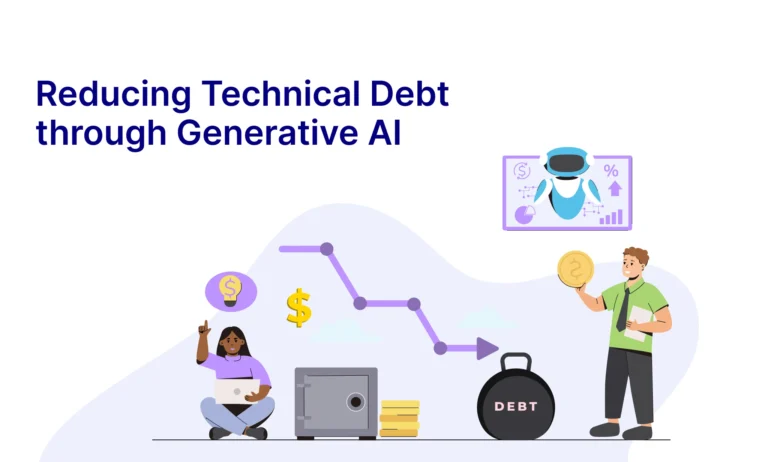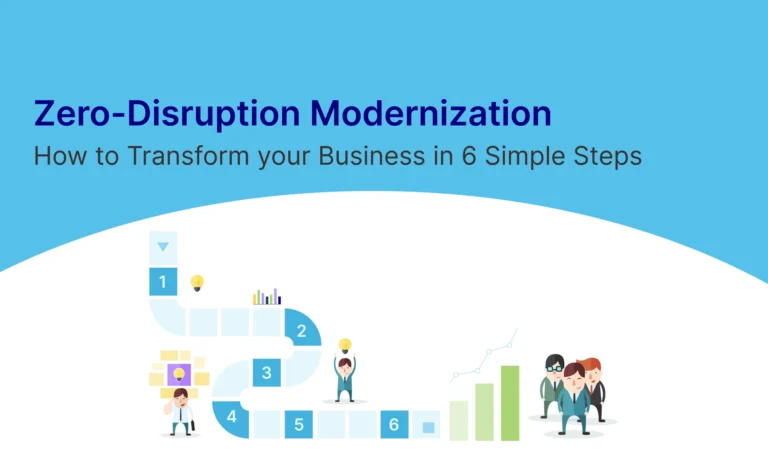Table of Contents
Introduction
In the fast-paced world of software development, technical debt is an almost unavoidable challenge. Technical debt refers to the future cost of additional rework caused by choosing an easy solution now instead of using a better approach that would take longer. It’s like a debt that accumulates interest over time, making systems harder to maintain and evolve. However, the concept of self-healing code offers a promising solution to manage and reduce technical debt effectively.
Understanding Technical Debt
Technical debt can manifest in various forms, such as poor code quality, outdated libraries, lack of documentation, and quick fixes that compromise long-term stability. As projects grow, these debts can slow down development, increase bugs, and ultimately lead to system failures.
Using Gen AI to Eliminate Common Code Issues
Gen AI has the potential to transform software development by addressing common issues such as poor code quality, outdated libraries, lack of documentation, and quick fixes that compromise long-term stability. Here’s how AI can be harnessed to tackle these challenges effectively.
Improving Code Quality
Gen AI can enhance code quality through automated code reviews and refactoring. By leveraging AI models trained on vast codebases, developers can identify and rectify potential issues before they become problematic.
How It Works:
- Automated Code Reviews: AI tools like DeepCode and Codota analyze code in real-time, flagging potential errors, code smells, and anti-patterns. These tools provide suggestions for improvements, helping developers write cleaner and more maintainable code.
- Refactoring Assistance: AI-driven refactoring tools can automatically suggest and apply changes to improve code structure and readability, ensuring adherence to best practices and design patterns.
Updating Outdated Libraries
Keeping libraries and dependencies up to date is crucial for security and performance. AI can help automate this process by identifying outdated libraries and suggesting or implementing updates.
How It Works:
- Dependency Management: Tools like Dependabot (now integrated into GitHub) use AI to monitor your project’s dependencies, alerting you to outdated or vulnerable libraries and automatically generating pull requests with the necessary updates.
- Compatibility Checks: AI models can test updates in isolated environments to ensure compatibility with the existing codebase, reducing the risk of introducing new issues.
Enhancing Documentation
AI can assist in generating and maintaining comprehensive documentation, making it easier for developers to understand and work with the code.
How It Works:
- Automated Documentation Generation: AI tools like OpenAI’s Codex can generate documentation from code comments, method signatures, and code context, ensuring that documentation is always up to date.
- Code Commenting: AI can analyze code and suggest meaningful comments, explaining the purpose and functionality of code blocks. This helps maintain a high standard of documentation without placing an additional burden on developers.
Preventing Quick Fixes
Quick fixes can lead to long-term stability issues if not addressed properly. AI can help identify these fixes and suggest more robust solutions.
How It Works:
- Contextual Analysis: AI tools can analyze the context in which a quick fix is applied, evaluating its long-term impact and suggesting more sustainable alternatives.
- Code Review Assistance: During code reviews, AI can flag quick fixes and prompt developers to consider more comprehensive solutions, promoting a culture of quality and stability.
Implementing AI Solutions
To effectively implement gen AI solutions, consider the following steps:
- Integrate AI Tools: Start by integrating AI-powered tools into your development workflow. Many of these tools offer plugins for popular IDEs and version control systems, making adoption seamless.
- Train and Customize: Customize AI models to understand your specific codebase and development practices. Training AI models on your project’s historical data can improve accuracy and relevance.
- Continuous Monitoring: Regularly monitor the performance and effectiveness of AI tools. Collect feedback from developers to refine and improve the AI models over time.
- Encourage Adoption: Foster a culture of AI adoption by educating your development team on the benefits and capabilities of AI tools. Provide training and support to ensure smooth integration.
Conclusion
Gen AI offers powerful solutions to common code issues, enhancing code quality, updating outdated libraries, improving documentation, and preventing quick fixes. By integrating AI tools into your development workflow, you can significantly reduce technical debt, improve software maintainability, and ensure long-term stability. Embracing AI in software development is not just a trend but a strategic move towards more efficient and effective coding practices.







